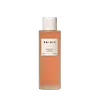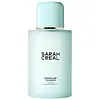What's inside
What's inside
 Key Ingredients
Key Ingredients

 Benefits
Benefits

 Concerns
Concerns

 Ingredients Side-by-side
Ingredients Side-by-side

Water
Skin ConditioningButylene Glycol
HumectantGlycerin
Humectant1,2-Hexanediol
Skin ConditioningNiacinamide
SmoothingCoffea Arabica Seed Oil
MaskingAcetyl Hexapeptide-22
AntioxidantSh-Octapeptide-4
AntioxidantSh-Pentapeptide-19
Skin ConditioningSh-Decapeptide-7
AntioxidantCaffeoyl Tripeptide-1
AntioxidantOligopeptide-28
AntioxidantRosmarinus Officinalis Extract
AntimicrobialMelia Azadirachta Leaf Extract
Skin ConditioningMelia Azadirachta Flower Extract
Skin ConditioningOcimum Sanctum Leaf Extract
Skin ConditioningFreesia Refracta Extract
Skin ConditioningMentha Piperita Leaf Extract
Skin ConditioningChamomilla Recutita Flower Extract
MaskingMonarda Didyma Leaf Extract
Skin ConditioningRosmarinus Officinalis Leaf Extract
AntimicrobialLavandula Angustifolia Flower Extract
CleansingCurcuma Longa Root Extract
MaskingCorallina Officinalis Extract
Skin ConditioningCitric Acid
BufferingGlycereth-26
HumectantPanthenol
Skin ConditioningPolyglyceryl-10 Laurate
Skin ConditioningCellulose Gum
Emulsion StabilisingPolyglyceryl-4 Laurate
EmulsifyingDipropylene Glycol
HumectantSodium Citrate
BufferingXanthan Gum
EmulsifyingCyanocobalamin
Skin ConditioningCaprylic/Capric Triglyceride
MaskingEthylhexylglycerin
Skin ConditioningLavandula Angustifolia Oil
MaskingCitrus Aurantium Bergamia Peel Oil
Pelargonium Graveolens Flower Oil
MaskingEucalyptus Globulus Leaf Oil
PerfumingLinalool
PerfumingLimonene
PerfumingCitronellol
PerfumingGeraniol
PerfumingWater, Butylene Glycol, Glycerin, 1,2-Hexanediol, Niacinamide, Coffea Arabica Seed Oil, Acetyl Hexapeptide-22, Sh-Octapeptide-4, Sh-Pentapeptide-19, Sh-Decapeptide-7, Caffeoyl Tripeptide-1, Oligopeptide-28, Rosmarinus Officinalis Extract, Melia Azadirachta Leaf Extract, Melia Azadirachta Flower Extract, Ocimum Sanctum Leaf Extract, Freesia Refracta Extract, Mentha Piperita Leaf Extract, Chamomilla Recutita Flower Extract, Monarda Didyma Leaf Extract, Rosmarinus Officinalis Leaf Extract, Lavandula Angustifolia Flower Extract, Curcuma Longa Root Extract, Corallina Officinalis Extract, Citric Acid, Glycereth-26, Panthenol, Polyglyceryl-10 Laurate, Cellulose Gum, Polyglyceryl-4 Laurate, Dipropylene Glycol, Sodium Citrate, Xanthan Gum, Cyanocobalamin, Caprylic/Capric Triglyceride, Ethylhexylglycerin, Lavandula Angustifolia Oil, Citrus Aurantium Bergamia Peel Oil, Pelargonium Graveolens Flower Oil, Eucalyptus Globulus Leaf Oil, Linalool, Limonene, Citronellol, Geraniol
Water
Skin ConditioningSqualane
EmollientEthylhexyl Palmitate
EmollientGlycerin
HumectantButylene Glycol
HumectantNiacinamide
SmoothingPentylene Glycol
Skin ConditioningGluconolactone
Skin ConditioningXylitylglucoside
HumectantSodium PCA
HumectantNicotiana Benthamiana Hexapeptide-40 Sh-Polypeptide-2
Skin ConditioningSodium Hyaluronate
HumectantAnhydroxylitol
HumectantHydroxypropyltrimonium Hyaluronate
Hydroxyacetophenone
AntioxidantXylitol
HumectantHeptyl Glucoside
Sodium Benzoate
MaskingSodium Hydroxide
BufferingSodium Citrate
BufferingCitric Acid
BufferingSilica Dimethyl Silylate
EmollientGlucose
HumectantCalcium Gluconate
HumectantPhenoxyethanol
PreservativeWater, Squalane, Ethylhexyl Palmitate, Glycerin, Butylene Glycol, Niacinamide, Pentylene Glycol, Gluconolactone, Xylitylglucoside, Sodium PCA, Nicotiana Benthamiana Hexapeptide-40 Sh-Polypeptide-2, Sodium Hyaluronate, Anhydroxylitol, Hydroxypropyltrimonium Hyaluronate, Hydroxyacetophenone, Xylitol, Heptyl Glucoside, Sodium Benzoate, Sodium Hydroxide, Sodium Citrate, Citric Acid, Silica Dimethyl Silylate, Glucose, Calcium Gluconate, Phenoxyethanol
Ingredients Explained
These ingredients are found in both products.
Ingredients higher up in an ingredient list are typically present in a larger amount.
Butylene Glycol (or BG) is used within cosmetic products for a few different reasons:
Overall, Butylene Glycol is a safe and well-rounded ingredient that works well with other ingredients.
Though this ingredient works well with most skin types, some people with sensitive skin may experience a reaction such as allergic rashes, closed comedones, or itchiness.
Learn more about Butylene GlycolCitric Acid is an alpha hydroxy acid (AHA) naturally found in citrus fruits like oranges, lemons, and limes.
Like other AHAs, citric acid can exfoliate skin by breaking down the bonds that hold dead skin cells together. This helps reveal smoother and brighter skin underneath.
However, this exfoliating effect only happens at high concentrations (20%) which can be hard to find in cosmetic products.
Due to this, citric acid is usually included in small amounts as a pH adjuster. This helps keep products slightly more acidic and compatible with skin's natural pH.
In skincare formulas, citric acid can:
While it can provide some skin benefits, research shows lactic acid and glycolic acid are generally more effective and less irritating exfoliants.
Most citric acid used in skincare today is made by fermenting sugars (usually from molasses). This synthetic version is identical to the natural citrus form but easier to stabilize and use in formulations.
Read more about some other popular AHA's here:
Learn more about Citric AcidGlycerin is already naturally found in your skin. It helps moisturize and protect your skin.
A study from 2016 found glycerin to be more effective as a humectant than AHAs and hyaluronic acid.
As a humectant, it helps the skin stay hydrated by pulling moisture to your skin. The low molecular weight of glycerin allows it to pull moisture into the deeper layers of your skin.
Hydrated skin improves your skin barrier; Your skin barrier helps protect against irritants and bacteria.
Glycerin has also been found to have antimicrobial and antiviral properties. Due to these properties, glycerin is often used in wound and burn treatments.
In cosmetics, glycerin is usually derived from plants such as soybean or palm. However, it can also be sourced from animals, such as tallow or animal fat.
This ingredient is organic, colorless, odorless, and non-toxic.
Glycerin is the name for this ingredient in American English. British English uses Glycerol/Glycerine.
Learn more about GlycerinNiacinamide is a multitasking form of vitamin B3 that strengthens the skin barrier, reduces pores and dark spots, regulates oil, and improves signs of aging.
And the best part? It's gentle and well-tolerated by most skin types, including sensitive and reactive skin.
You might have heard of "niacin flush", or the reddening of skin that causes itchiness. Niacinamide has not been found to cause this.
In very rare cases, some individuals may not be able to tolerate niacinamide at all or experience an allergic reaction to it.
If you are experiencing flaking, irritation, and dryness with this ingredient, be sure to double check all your products as this ingredient can be found in all categories of skincare.
When incorporating niacinamide into your routine, look out for concentration amounts. Typically, 5% niacinamide provides benefits such as fading dark spots. However, if you have sensitive skin, it is better to begin with a smaller concentration.
When you apply niacinamide to your skin, your body converts it into nicotinamide adenine dinucleotide (NAD). NAD is an essential coenzyme that is already found in your cells as "fuel" and powers countless biological processes.
In your skin, NAD helps repair cell damage, produce new healthy cells, support collagen production, strengthen the skin barrier, and fight environmental stressors (like UV and pollution).
Our natural NAD levels start to decline with age, leading to slower skin repair, visible aging, and a weaker skin barrier. By providing your skin niacinamide, you're recharging your skin's NAD levels. This leads to stronger, healthier, and younger looking skin.
Another name for vitamin B3 is nicotinamide. This vitamin is water-soluble and our bodies don't store it. We obtain Vitamin B3 from either food or skincare. Meat, fish, wheat, yeast, and leafy greens contain vitamin B3.
The type of niacinamide used in skincare is synthetically created.
Learn more about NiacinamideSodium Citrate is the sodium salts of citric acid. In skincare, it is used to alter pH levels and acts as a preservative.
Its main functions are to maintain the pH of a product and neutralize metal ions.
The acidity of our skin is maintained by our glands and skin biome; normal pH level of skin is slightly acidic (~4.75-5.5).
Being slightly acidic allows our skin to create an "acid mantle". This acid mantle is a thin barrier that protects our skin from bacteria and contaminants.
Learn more about Sodium CitrateWater. It's the most common cosmetic ingredient of all. You'll usually see it at the top of ingredient lists, meaning that it makes up the largest part of the product.
So why is it so popular? Water most often acts as a solvent - this means that it helps dissolve other ingredients into the formulation.
You'll also recognize water as that liquid we all need to stay alive. If you see this, drink a glass of water. Stay hydrated!
Learn more about Water